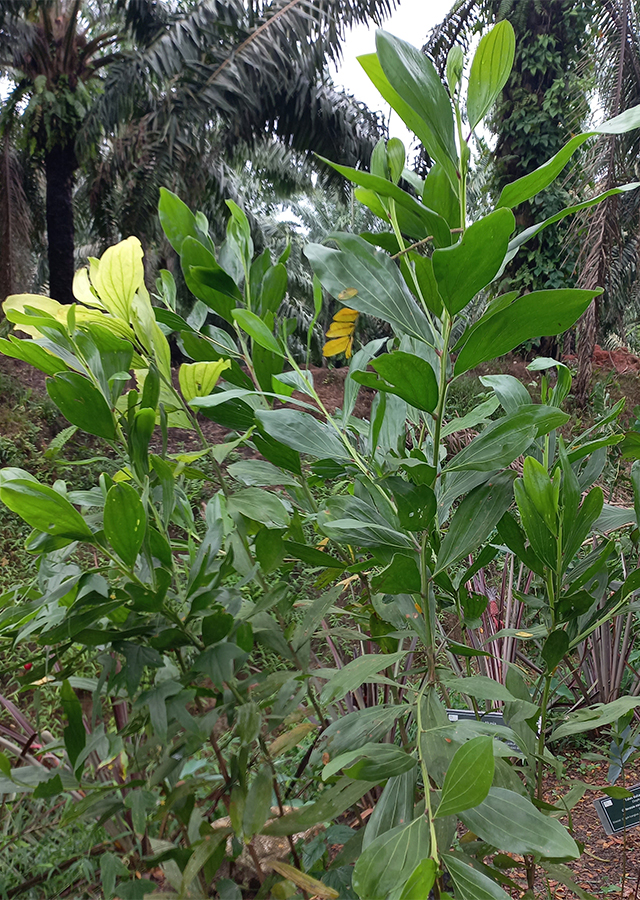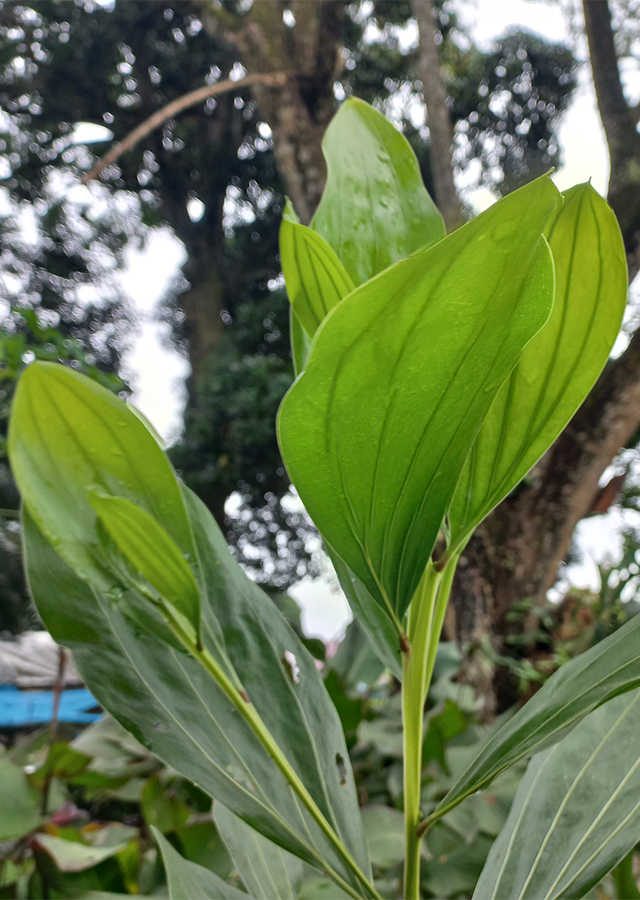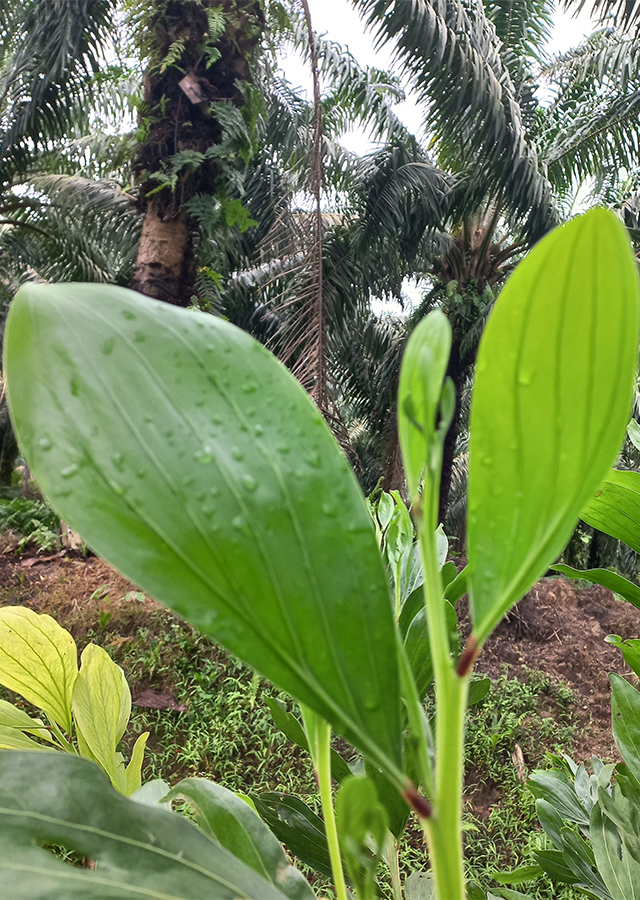Brown Salwood
Acacia mangium Willd.
Fabaceae
Location in our garden
Principal



Synonym
Mangium montanum Rumph.
Racosperma mangium (Willd.) Pedley
Acacia holosericea A.Cunn.
Habitus
Trees. A single-stemmed evergreen tree or shrub growing to a height of 25-35 m
Part Used
Leaves
Bark
Growing Requirements
Full Sunshine
Habitat
Riverbanks
Forest
Shrublands
Grassland
Terrestrial
Overview
The plant is native to northeastern Queensland in Australia, the Western Province of Papua New Guinea, Papua, and the eastern Maluku Islands. Large-scale plantations have already been established in Indonesia and Malaysia for the production of paper pulp. Commercial planting of A. mangium in other Asian countries such as China, the Philippines, Thailand and Vietnam is increasing. The tree is harvested from the wild for its wood, which is used locally and also traded. The seed of many Acacia species, including this one, is edible and highly nutritious, and can be eaten safely as a fairly major part of the diet.
Vernacular Names
Gra thin saa baah (Thai), Mangium (Malay), Abuhin (Philippines), Da ye siang sai (Chinese), Akashia mangiumu (Japanese), Akesiya mainajiyama (Hindi), Zamorano (Spanish), Akatsia mangium (Russian).
Agroecology
A plant of the warm humid tropics, it is found at elevations up to 800 m in areas where the mean annual rainfall is in the range of 1,500 - 3,000 mm. Prefers a well-drained soil, but succeeds in poorly drained conditions. Prefers a pH in the range 4.5 - 6.5, soils with a high pH are not tolerated. Requires a sunny position.
Morphology
- Trunks - straight.
- Barks - rough, hard, fissured near the base, greyish-brown to dark brown; inner back is pale brown.
- Leaves - very acutely angled, glabrous and stout branchlets. Very large, normally 11-27 cm long and 3-10 cm broad. They are dark green, glabrous on a glabrous pulvinus 0.6-1 cm long.
- Flowers - quinqeufloral. Calyx is 0.6-0.8 mm long, with obtuse lobes, and corolla 1.2-1.5 mm long.
- Pods - broad, linear, and irregularly coiled when ripe, membranous or slightly woody, inconspicuously veined, 3-5 mm wide and 7-10 cm long.
- Seeds - black and shiny, longitudinal, elliptical, ovate to oblong, 3-5 mm by 2-3 mm, longitudinally arranged and attached to to pods by an orange or red utricle.
Cultivation
- Propagated by seeds - pre-treatment is necessary to break the hard seed coat. The visibly swollen seeds should be sown immediately. Young seedlings are potted up when large enough to handle, and can be planted out when 25cm tall, usually after about 16 weeks.
- By air layering and grafting - Single-node stem cuttings 4 - 5 cm long and 0.5 - 1.5 cm in diameter, leaving 0.5 - 1 phyllodes. The application of indole-butyric acid or rooting powder enables 65-75% rooting.
Chemical Constituents
Flavonoids, tannins, alkaloids, phenolics, steroids, terpenoids, methoxyl, uronic acid, methylgucoronic acid, glucoronic acid, galactose, arabinose, and rhamnose.
Traditional Medicinal Uses
- Studies have suggested antidiabetic, antioxidant, antiproliferative, molluscicidal properties.
Part Used
Reference Sources
- Stuartxchange. 2019. Philippine Medicinal Plants: Abuhin. http://www.stuartxchange.org/Abuhin. 01-09-2021.
- Useful Tropical Plants. 2021. Acacia mangium. https://tropical.theferns.info/viewtropical.php?id=Acacia+mangium. 01-09-2021.
- CAB International. 2021. Invasive Species Compendium: Acacia mangium (brown salwood). https://www.cabi.org/isc/datasheet/2325. 01-09-2021.

